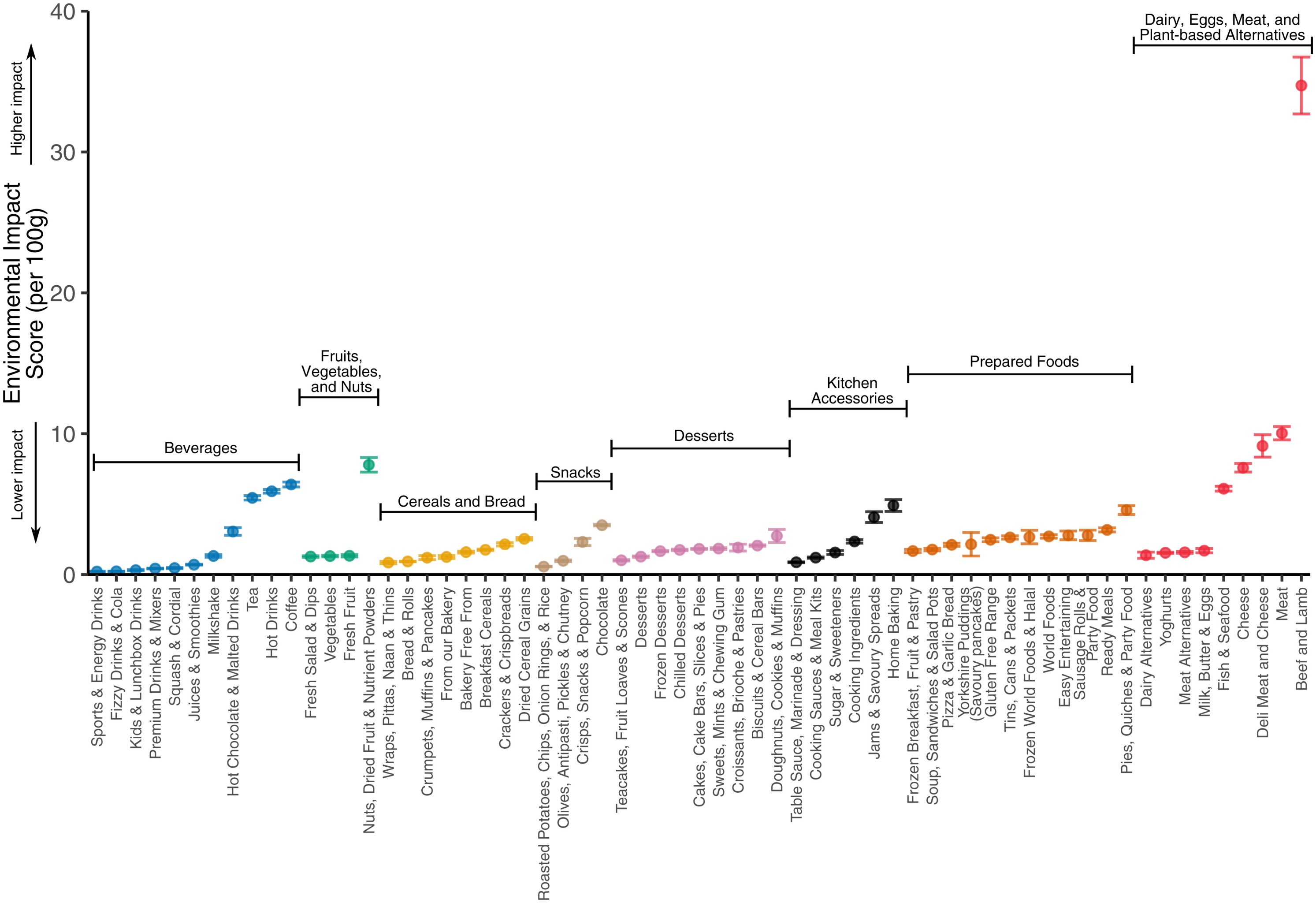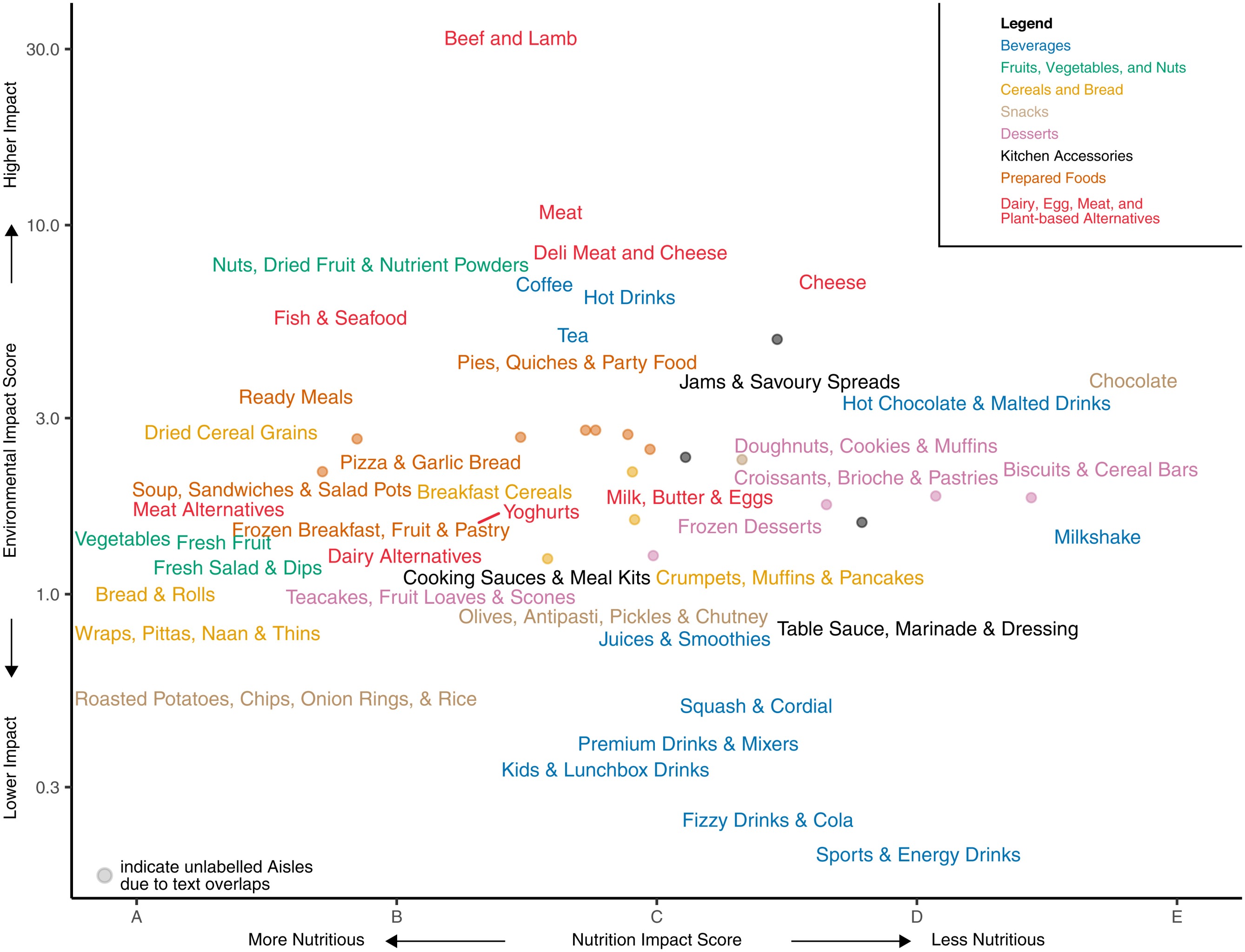In order for consumers to purchase more sustainability, better information regarding the environmental impact of products is required. However, deciphering exactly the impact and origins of various ingredients and items is not an easy feat. Even for food producers themselves, it’s not always entirely clear exactly how sustainable their products are – or are not.
Researchers at the UK’s Oxford University have developed a new algorithm which can help to shed some light on this situation. Their work, published in PNAS journal, attempts to combine all the information of various products into a simple, easily understood score which can be printed onto packaging. It’s hoped this easily accessible information will help consumers make more sustainable choices, especially between similarly priced items.
Whereas previous efforts have concentrated on evaluating the environmental impact of individual ingredients, such as beef, wheat or fruits, the new approach understands that many products are a combination of many different ingredients – complicating their environmental blueprint. The new algorithm is able to access the full list of ingredients in items and then compare them to available environmental databases. It then creates results for each type of food with an environmental score based on four main metrics: greenhouse gas emissions, land use, water stress, and eutrophication potential (the impact of over-fertilisation on land and aquatic environments).
The Results Are In…
Their results, derived from 57,000 items in UK supermarkets, makes for some predictable, but also surprising reading. All products are given a numerical ‘eco-score’ rating between 0 and 40, with 0 being the lowest environmental impact and 40 the highest. Of course, meat and dairy products are way out on top, with beef and lamb in particular gaining the highest rating of 34.72. Nuts, tea, coffee and chocolate also rate relatively high for their categories, although all are only a fraction of the overall impact of meat. What is perhaps most surprising is fizzy drinks and cola earning the lowest score of 0.23.
However, the researchers themselves suggest their approach does not all take all factors into consideration. For example, country of origin is not addressed, a factor which can have a major impact on the carbon footprint of certain items, such as fish, vegetables and drinks. Additionally, the manner of production is also not addressed. Therefore, items such as ready meals rank relatively low, even though they may use controversially intensive farming methods to create cheap meat. Meanwhile, many large food producers such as Nestlé and Coca Cola also have a long legacy of human rights scandals, which is also not addressed in the algorithm. There are also wide discrepancies within certain items; the least environmentally damaging sausage had only a third of the score of the most damaging.
This issue hits at the challenge of such a rating system. In order to be accessible, the information must also be somewhat simplified and various factors may need to be excluded to provide practical and useful results. The team themselves understand that their eco-score may be most useful then cross-referenced with other rating systems, such as the common ‘Nutri-score’ which rates the nutritional value of food items. When this is done, the choice between ‘good’ and ‘bad’ foods – both environmentally and nutritionally – becomes a bit more complex.
Regardless, such scores are generally a step in the right direction, even if they do not provide a completely clear picture of reality. Plus, they are not only useful for consumers. Producers themselves are often in the dark about the environmental impact of their own products. With some producers pledging themselves to net zero by 2030 goals, this kind of information can become invaluable. For example, the research team discovered that the addition of one ingredient can greatly impact the overall score of a product, such as adding chocolate to biscuits.
A Change in Shopping Behaviour?
It is also possible scores such as this can open up a new avenue of competition between food producers. If the environmental impact of products was made much clearer to consumers, it may compel manufacturers to improve their sustainability to appear more attractive compared to rivals. Although such an objective eco-score labelling is unlikely to become compulsory in the near future – at least in the UK – the voluntary adoption of an independent rating system could boost certain brands. If such practices can be seen to improve profitability amongst a more environmentally conscious consumer-base, the general sustainability of the entire food network could improve.
Of course, cost is usually the bottom-line for many consumers, especially considering the burgeoning cost of living crisis, and is debatable how much such information will truly affect buying behaviour. But if consumers themselves are to be believed, there is a desire for more sustainable options. According to a recent study by First Insight, two-thirds of American consumers say they were willing to pay up to 10 percent more for sustainable products. Among GenZ consumers, this increased to 90 percent. Conversely, two-thirds of retailers suggested consumers did not want to pay more for sustainable products – driving their marketing behaviour.
In reality, these kinds of surveys had been largely theoretical, as no reliable information regarding the sustainability of products was widely available. At the very least, rating systems such as those outlined above could finally give consumers some kind of insight into how their shopping impacts the environment.










